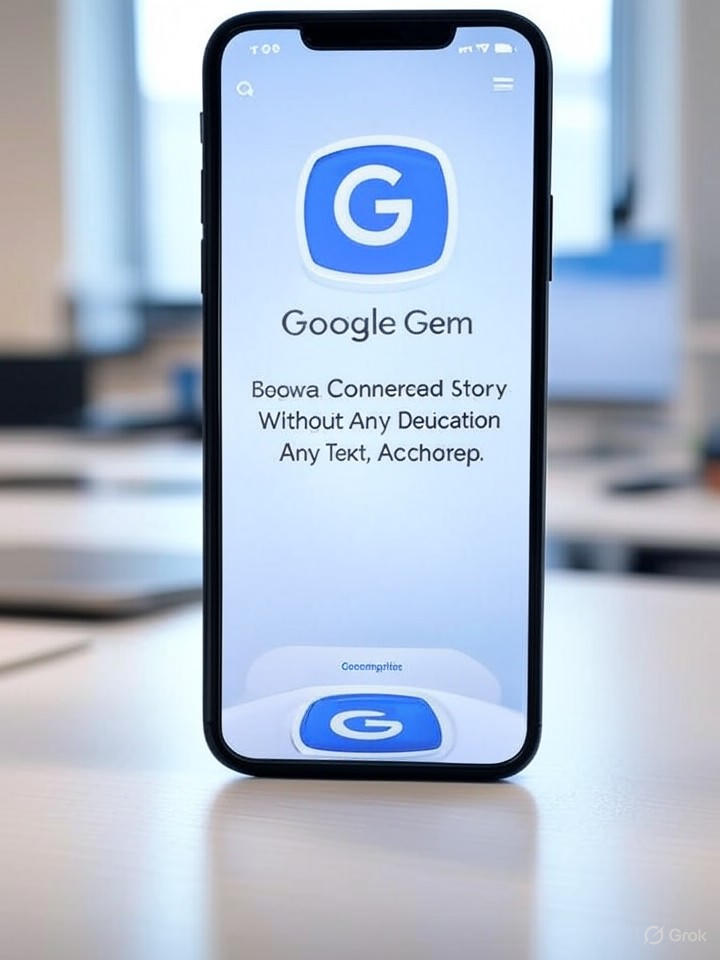In the rapidly evolving world of artificial intelligence, Google’s Gemini app has introduced a feature that’s capturing the attention of multimedia creators and tech enthusiasts alike: the ability to transform static photos into dynamic eight-second videos. Powered by the advanced Veo 3 model, this tool allows users to breathe life into images by generating motion, sound, and narrative elements from simple prompts. As detailed in a recent post on Google’s official blog, the feature is not just a novelty but a practical asset for storytelling, education, and creative experimentation.
The process begins with uploading a photo to the Gemini app, followed by a descriptive prompt that guides the AI in animating the scene. For instance, a still image of a serene beach could be turned into a video showing waves crashing and seagulls flying, complete with ambient audio. This integration of Google’s Veo 3, which also supports text-to-video generation, marks a significant step forward in making AI-driven content creation accessible to non-professionals. Early adopters, including journalists and educators, are already leveraging it to enhance visual narratives without needing expensive software or editing skills.
Unleashing Creative Potential Through Everyday Imagery
One compelling application highlighted in the Google blog involves using photo-to-video for multimedia storytelling. A contributor there describes transforming a childhood photo into a lively clip that evokes nostalgia, adding elements like wind-swept hair and background music to create an emotional arc. This resonates with broader trends in AI, where tools like Gemini are democratizing video production. According to a report from The Verge, the feature’s rollout in July 2025 expanded to include audio synthesis, allowing for more immersive outputs that rival professional edits.
Industry insiders note that this capability extends beyond fun projects. In educational contexts, teachers are using it to animate historical photos, making lessons more engaging. For example, a static image of a historical event can be prompted to show movement and context, helping students visualize timelines. Posts on X from users like the official Google Gemini App account emphasize its ease of use, with one tweet announcing, “Make photos come alive by turning them into videos with sound,” garnering millions of views and signaling strong public interest.
Technical Underpinnings and Integration with Google’s Ecosystem
At its core, Gemini’s photo-to-video relies on Veo 3’s sophisticated algorithms, which analyze image composition to infer motion and generate coherent sequences. This is an evolution from earlier models like Veo 2, as noted in Google’s release notes on their Gemini site, where updates include improved generative capabilities. The tool’s eight-second limit encourages concise storytelling, but users can chain multiple clips for longer formats, a tip shared in the blog for aspiring filmmakers.
Integration with other Google products amplifies its utility. For instance, combining it with Google Workspace allows seamless embedding into presentations, as outlined in a recent Google Workspace update. This synergy is particularly valuable for businesses, where quick video assets can enhance marketing materials. A post on X from Google Workspace highlights new features in Slides and Vids, such as prompt-based image editing, which pairs naturally with photo-to-video for end-to-end content creation.
Challenges and Ethical Considerations in AI Video Generation
Despite its promise, the feature isn’t without hurdles. Generating high-quality videos requires precise prompts; vague descriptions can lead to unnatural animations, as some users have reported on X. Moreover, concerns about deepfakes and misinformation arise, prompting Google to implement safeguards like watermarks on AI-generated content. A deep dive in Android Central discusses these in the context of Gemini’s September 2025 updates, including visual guidance enhancements that could further refine outputs.
For industry professionals, the real value lies in iteration. Experimenting with prompts—such as specifying camera angles or moods—yields better results, per tips from the Google blog. One suggested workflow involves starting with Gemini’s image editing tools, like the updated Nano Banana model for transforming photos, then animating them. This is echoed in a guide from Jagran Josh, which provides step-by-step prompts for converting 3D models into videos.
Future Implications for Content Creation Industries
Looking ahead, Gemini’s photo-to-video could disrupt sectors like advertising and social media, where short-form video reigns supreme. With updates rolling out monthly via “Gemini Drops,” as announced in a Google blog post, features like camera sharing for real-time guidance are set to enhance usability. X posts from Demis Hassabis, CEO of Google DeepMind, underscore the excitement, noting it’s a “highly requested” addition available to subscribers.
Ultimately, this tool exemplifies how AI is reshaping creative workflows, offering insiders a glimpse into a future where imagination meets instant execution. As adoption grows, expect refinements that address current limitations, solidifying Gemini’s role in the AI toolkit.

